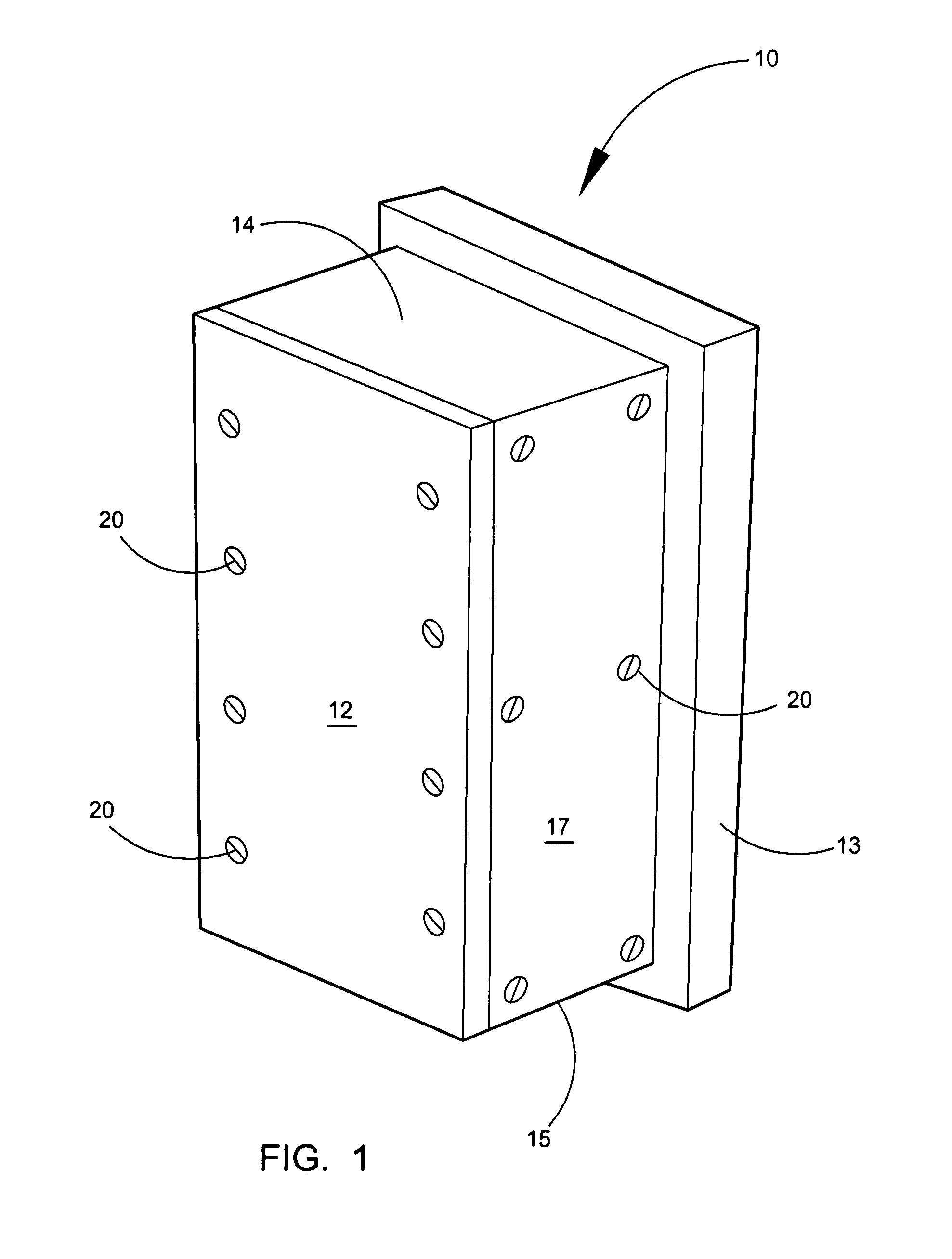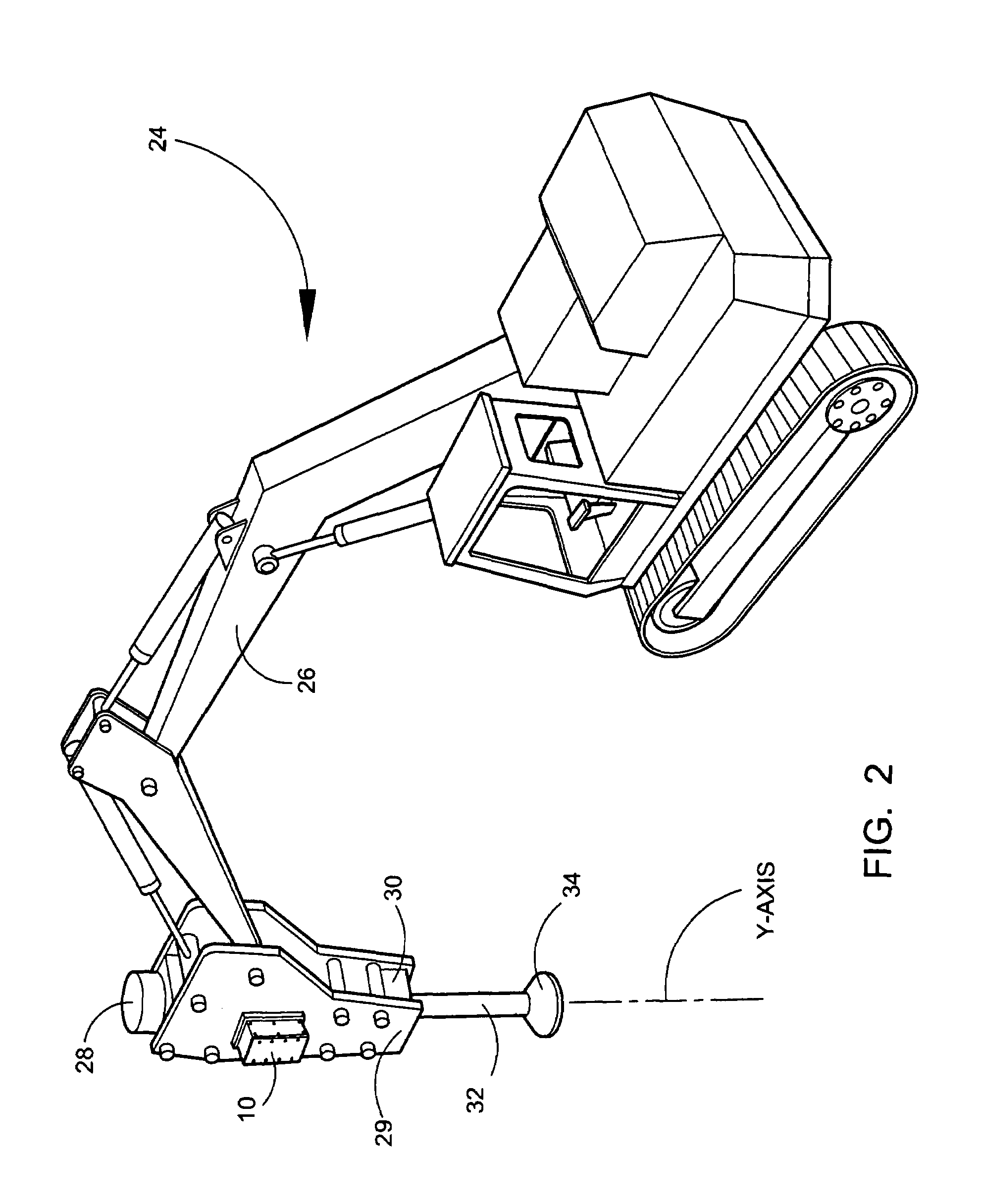Displacement instrument for determining the modulus of a material
a displacement instrument and material technology, applied in the direction of instruments, mechanical measuring arrangements, apparatus for force/torque/work measurement, etc., can solve the problems of excessive over-design, lack of modulus consistency of each pier within the entire construction site, and lack of modulus consistency of each layer of aggregate within the pier
- Summary
- Abstract
- Description
- Claims
- Application Information
AI Technical Summary
Benefits of technology
Problems solved by technology
Method used
Image
Examples
Embodiment Construction
[0026]The novel displacement instrument will now be described by referring to FIGS. 1-8 of the drawings. The displacement instrument is generally designated numeral 10.
[0027]FIG. 1 shows the displacement instrument 10 having a housing or casing formed from a front cover plate wall 12, a rear plate wall 13, a top plate wall 14, a bottom plate wall 15, a left side plate wall 16 and a right side plate 17. The respective plates have a thickness in the order of ⅜ inch although they could be either thicker or thinner. The plates would normally be made from aluminum or a steel alloy, although other materials could be used. The respective plate members are connected to each other by bolts 20. The housing casing illustrated has an approximate width of 4 inches, an approximate depth of 4 inches and a height of approximately 10 inches. These dimensions are not critical and larger or smaller dimensions might be used in different applications.
[0028]A crane 24 is illustrated in FIG. 2 having an a...
PUM
| Property | Measurement | Unit |
|---|---|---|
| height | aaaaa | aaaaa |
| depth | aaaaa | aaaaa |
| width | aaaaa | aaaaa |
Abstract
Description
Claims
Application Information
 Login to View More
Login to View More - R&D
- Intellectual Property
- Life Sciences
- Materials
- Tech Scout
- Unparalleled Data Quality
- Higher Quality Content
- 60% Fewer Hallucinations
Browse by: Latest US Patents, China's latest patents, Technical Efficacy Thesaurus, Application Domain, Technology Topic, Popular Technical Reports.
© 2025 PatSnap. All rights reserved.Legal|Privacy policy|Modern Slavery Act Transparency Statement|Sitemap|About US| Contact US: help@patsnap.com



